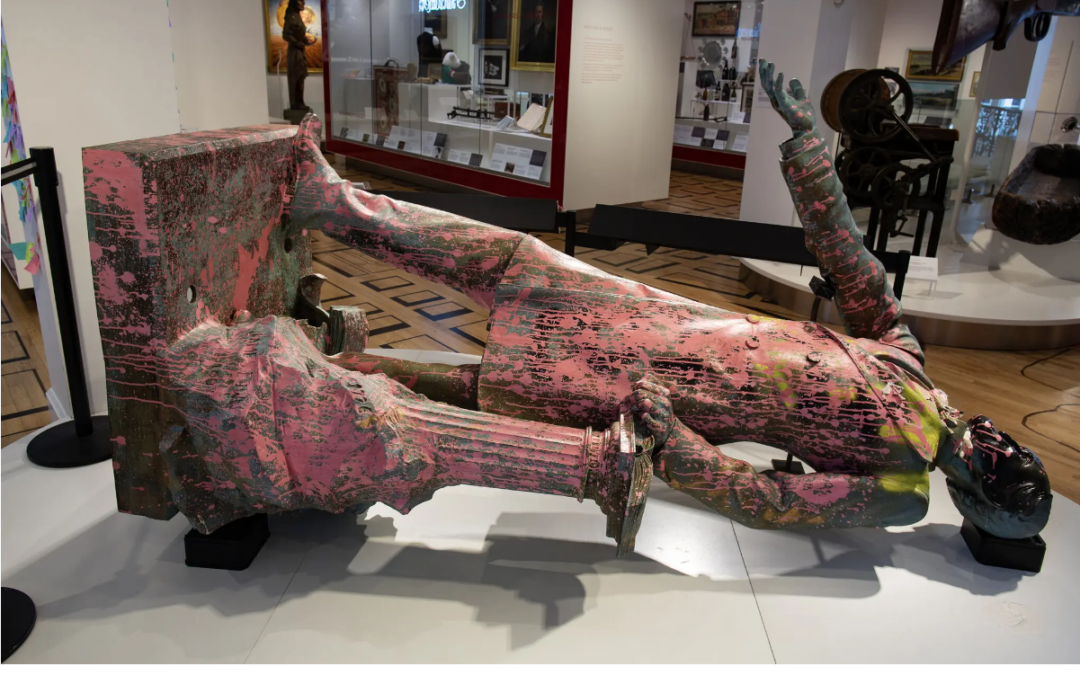History is not necessarily being rewritten in Richmond, Va., but there is a compelling new chapter in the works. The state capital, once the capital of the Confederacy, is reckoning with its legacy of slavery and Jim Crow-era racism: The mansion-lined Monument Avenue is now devoid of Confederate statues, and just recently, on a busy intersection two miles away, the last remaining city-owned statue of a Confederate officer, Ambrose P. Hill, was brought down.
A stroll around the city reveals hilly pockets that are stuffed with history, from railroad lines to old tobacco warehouses, from Queen Anne, Victorian, Georgian and Beaux-Arts facades to the Greek Revival splendor of the Virginia State Capitol building, designed in part by Thomas Jefferson. The city’s topography rises from the James River and is eminently walkable, but as you explore, don’t get buried in your phone’s maps, since many brick sidewalks are treacherously warped from bulging tree roots. Safe bike lanes on city streets are scarce. The bus system is free, a pandemic holdover.
Over the years, Richmond has drawn me back multiple times, each visit a deeper dive into Civil War history — with plenty of breaks for cramming in all the delicious food I can. On my most recent trip, as I scouted out museums, restaurants and historic neighborhoods, I was curious to feel the city’s pulse, to see how it was recovering.
Monument Avenue aftermath
“A vast cenotaph of secession” was how the journalist and historian Tony Horwitz described Richmond in his 1998 book, “Confederates in the Attic: Dispatches From the Unfinished Civil War.” Thorny discussions had been underway for decades about how to address Monument Avenue’s Confederate statues. Studies were done, proposals were made, but almost nothing changed.
Soon after Minneapolis police officers killed George Floyd on May 25, 2020, and amid the ensuing nationwide protests over systemic racism, activists toppled the bronze, eight-foot-tall statue of Jefferson Davis, the Civil War-era president of the Confederacy. That action compelled city and state politicians to safely dismantle four other statues, including those of Stonewall Jackson and Robert E. Lee.
“Nobody foresaw the complete removal of the statues and their bases,” said Edwin Slipek, an architectural historian and lifelong resident. “It was definitely a shock.”
Only the monument to the Richmond-born tennis great, Arthur Ashe, remains. Its installation on Monument Avenue in 1996 was itself fraught. According to Horwitz’s book, an objector at a City Council meeting pointed out, “The other guys on that Avenue would have enslaved him if they could.”

One of the toppled statues can still be seen, but visitors will have to cast their eyes down instead of up. Jefferson Davis lies prostrate at the Valentine, a downtown Richmond museum. In June, the statue went on display as it was found after it was torn down, mottled with Pepto-Bismol-pink paint, the remnants of a toilet paper noose poking from its collar.
“We wanted to document a moment in Richmond history, explain both what happened as the monument was erected in 1907 and the environment of 2020 when it was pulled down,” said Bill Martin, the director of the Valentine. The museum owns 800 pieces by Edward Valentine, the sculptor of the Davis statue and a brother of the museum’s founder. (The artist’s studio, under renovation, is in the back garden. His notions of Lost Cause mythology and racial stereotypes will be addressed when it reopens late next year, Mr. Martin said.)
Post-it notes provided for visitor feedback are stuck to a column by the Davis statue, the majority expressing thoughts like “Good riddance!” and “Should have been done years ago.” Someone less happy with the outcome wrote: “Sad that so many are so ignorant and destructive.”
The city’s Black History Museum & Cultural Center of Virginia owns the statue now, as well as the other four removed from Monument Avenue, which are said to be securely stored near a waste water treatment plant. The Davis statue will most likely remain on loan at the Valentine until it travels to Los Angeles for an exhibition next fall called “MONUMENTS,” a collection of decommissioned Confederate statues and contemporary works, co-organized by LAXART, a nonprofit visual art space, and the Museum of Contemporary Art (MOCA).
Hills and valleys of history
In a valley easily reached from the Valentine is the neighborhood of Shockoe Bottom. From 1830 to 1865, Richmond was second only to New Orleans as a slave-trading hub, and Shockoe Bottom — rank with auction houses, slave jails and a gallows — was at the center of that industry. The infrastructure was largely covered over, as was the African Burial Ground, which became a parking lot.
Today, the asphalt is gone, and the grassy, tombstone-less field feels forgotten, despite a few commemorative markers. Political and community initiatives are underway to do something more to memorialize the graveyard. Another major African burial ground has been identified beneath an abandoned gas station on Shockoe Hill and recently got a historical marker.
A bolder statement can be seen at the Virginia Museum of Fine Arts, where Kehinde Wiley’s towering “Rumors of War” statue lionizes a modern Black man in a hoodie astride a horse, a rejoinder to the now-vanished equestrian statues on Monument Avenue.
The Virginia Museum of History & Culture, which reopened earlier this year after an 18-month overhaul, is on the same strip, renamed Arthur Ashe Boulevard in 2019. There you’ll find a small exhibition, “Cheers, Virginia!” (through Jan. 29, 2023). Fifty boozy artifacts are on display, along with illustrated tributes to the state’s multicultural distillers (some enslaved), craft brewers, winemakers, apple fermenters, moonshiners and bartenders.
Take Jasper Crouch, for instance, a free Black man and bartender at Richmond’s Quoit Club in the 1820s, who is said to have invented Quoit Club punch, an icy blend of rum, brandy, Madeira and lemon. At the Jasper, a dark, convivial bar about 15-minutes by foot from the museum, the drink is faithfully crafted, and Crouch is credited on the menu.

Food for thought
The Jasper, in the bustling Carytown neighborhood, is a great starting point for cocktails and delectable finger food. Branching out from there, even the most dedicated food tourists would need more than a week to reach all the other culinary standouts around town.
Jackson Ward, a historically African American quarter, is home to the long-running Mama J’s, serving crunchy fried catfish and tender spare ribs (lunch runs about $40 for two). For coffee, Kelli Lemon’s Urban Hang Suite is a socially conscious neighborhood hub that uses beans from Rostov’s, a female-owned, local roastery. Saison is always worth a visit for solid drinks and ingenious combinations like sweet blue crab salad with cucumbers, tart blackberries and crushed peanuts ($16).
Image

In the nearby Church Hill neighborhood, there is Alewife for seafood (main courses, $25 to $35), Grisette for steak frites ($24) and profiteroles ($9), and the Roosevelt for seared scallops with Sea Island red peas ($36), a Lowcountry Gullah staple tracing back to West Africa.
“I’m fascinated by what Africans brought here and how they helped shape Southern culture,” said Leah Branch, the new executive chef at the Roosevelt, whose dishes also include a soft potato roll stuffed with crawfish, a playful riff on lobster rolls ($10) that is based on one of her grandmother’s specialties.
Downtown Richmond, too, is getting more interesting, with century-old commercial buildings being converted into condos and apartments and new businesses bringing life to shuttered storefronts. Last year, Jeffrey Laine took advantage of the cheap rent to open his 700-square-foot bakery, Europa Crust, where he sells dense, crusty French sourdough, hearty five-grain and Nissu sweet bread, braided with cardamom and coated in sugar, his best seller. While Richmond was evolving, he braved his own reinvention after being laid off early in the pandemic from a long career in food service sales. “I started baking bread, like everybody else,” Mr. Laine said.
Image

A few blocks away is Lillie Pearl, which opened in late 2020, a time when “downtown was a little sad during the pandemic, when America was struggling with race, B.L.M. and all that,” said Michael Lindsey, the chef who co-owns several other area restaurants with his wife, Kimberly Love-Lindsey. At a recent Sunday brunch, a diverse crowd packed the airy, wood-clad space.
Lillie Pearl was Mr. Lindsey’s grandmother, and he has updated her delicate buttermilk biscuits with dabs of Cheddar cheese ($7). Dripping with honey butter and fruity jam, the biscuits are impossible not to polish off. Shrimp and grits ($18) were souped up with creamy lobster stock, diced slab bacon and a sunny-side-up egg. Another winner was deep-fried bread pudding French toast soaked in caramel maple syrup, offset by salty, thick-crusted fried chicken ($14).
“As a Black chef, seeing a beautiful blend of people in the dining room, white people wanting to support a Black business, I get chills talking about it,” Mr. Lindsey said. “All history isn’t necessarily great history, but it’s history, and the energy here is back in a positive way.”
–nytimes.com




